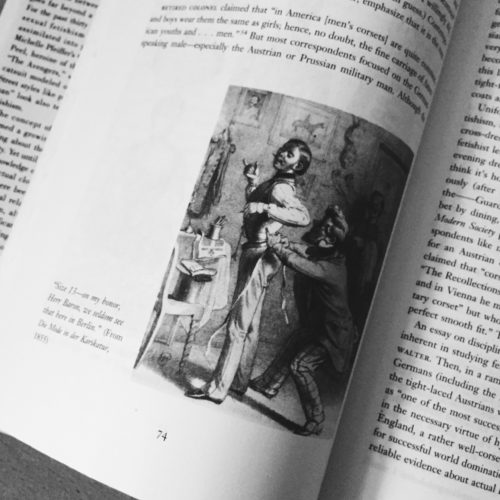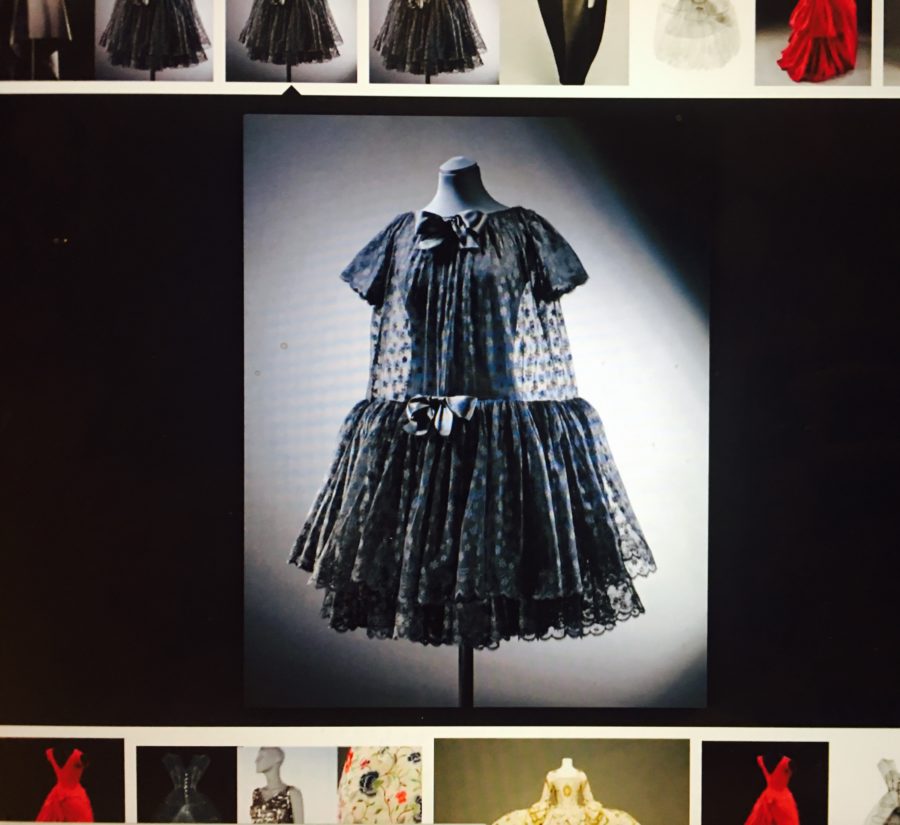This past week, the Courtauld had its annual winter ball, a chance for students to dress up in their fanciest evening wear and celebrate the end of term. During the 1930s, minaudières became a staple of women’s evening wardrobes. Defined as jewellery, these were miniature oblong cases which acted as purses or bags for cosmetics and other items considered essential for a smart evening out. In 1934, Van Cleef and Arpels patented the design and created luxury metal versions, finished with beautiful stones or lacquer. Even though they were beautiful and highly decorative, these cases were also functional – aimed at optimising space whilst carrying necessary items. Studying these items as dress historians proves most interesting because they reveal what were considered the essentials for an evening out in the 1930s.
This minaudière, which has been passed down the line of women in my family, appears to be from the years following the 1930s. An inscription on one of the clasps shows it is made by L.S. Mayer for ‘Park Lane Deluxe.’ The exterior is in an art deco style faux shagreen, a beautiful pebble green colour with a speckled pattern, and a gold metal frame. It has a chain which would have been worn round the wearer’s wrist whilst dancing at the balls, also making it fulfil the role of a decorative bracelet. In the first section inside there features a very generously sized mirror which runs the entire length of the minaudière, and opposite that there are two compartments which include rouge and powder, complete with the puffs to apply them. There is a fold up tortoiseshell hair comb, and a section at the bottom for a bullet of lipstick or perhaps cigarettes. Each aspect of the design has been carefully thought through to make do with the small space and to maximise its functionality.

On the reverse of the minaudière, there is another mirror and a notepad and pen with a holder. There is also a hidden compartment below this which flaps up to reveal a long and narrow case, which could have contained alcohol or was a cigarette lighter. What makes this minaudière stand out from the rest is that it differs greatly from any usual accessory, because it features a notepad and pen. As my grandmother says, this could have been for women to write down the names of their partners to dance with at the ball. Either way, it asserts the active role women had at the time in terms of fashioning their own identity. The minaudière is also interesting when compared to modern day clutch bags used on nights out such as the Courtauld’s Winter Ball. Usually there is at the very most a tiny zip pocket in clutch bags, and the rest is an empty space. On the one hand, the 1930s minaudières were genius in that they planned out each and every thing that might be needed, and catered for it within the case. On the other hand, nowadays we have much more freedom in choosing which items we consider as essentials in our individual clutch bags, and therefore how our evenings will be defined.

By Grace Lee
All photos author’s own






















